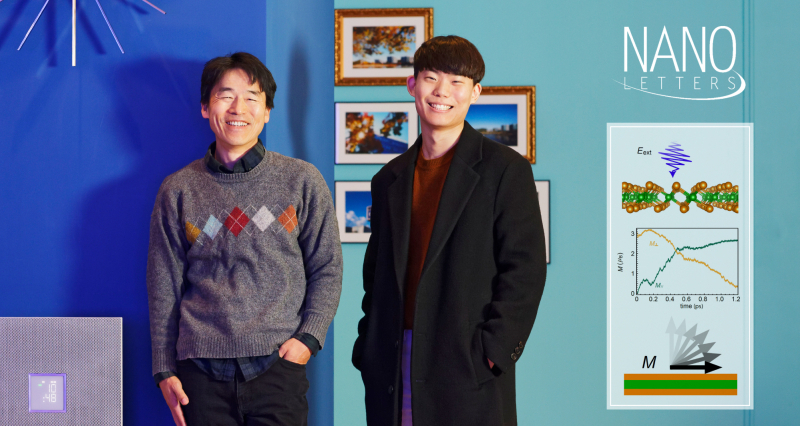Magnetic memory (MRAM), a computer memory device that uses the physical characteristics of magnets, is notable for data loss (nonvolatile) even when the power is turned off. Research has shown clues to further improving the efficiency of the device.
A joint research team, affiliated with UNIST has recently proposed a way to effectively control the magnetic anisotropy of a magnetic material with hundreds of millions of thick. Magnetic anisotropy is a property, in which the degree of magnetization varies depending on the axial direction of the magnetic crystal. In this study, researchers used this property as an “on-off switch,” thereby demonstrating the potential to store information faster and more reliably, reducing energy consumption. This study has been carried out by Professor Noejung Park in the School of Natural Science at UNIST in collaboration with Professor Jeongwoo Kim from Incheon National University and Kyoung-Whan Kim from the Korea Institute of Science and Technology (KIST).
The magnetism of matter comes from an electron rotational movement called “spin.” Spin is a tiny “grain of magnet” with an N-S pole that can be aligned by applying a magnetic field. At this time, the material becomes magnetic and is called ‘magnetization’. Magnetic memory uses this “magnetization direction” to store and read information. However, if the magnetization is controlled by the magnetic field, it consumes a lot of power and generates heat, making it difficult to increase the degree of integration of the memory device.

Schematic illustration of controlling the magnetic anisotropy of magnetic materials.
The study proved theoretically that it is possible to “control the direction of magnetization using light and electric fields” rather than magnetic fields. The application of light and an electric field to the chromium iodide (CrI₃), a two-dimensional material, suggests that the magnetic anisotropy can be controlled. The magnetic material is magnetized in accordance with the magnetic anisotropy, so the magnetization can be controlled without a magnetic field. This saves information faster and more reliably, while reducing energy consumption.
When the magnetic anisotropy of the magnetic body is large, the spin is aligned to one side. This ensures that the information entered is stored reliably, but the energy consumed when entering new information is high. This dilemma can be overcome by controlling self anisotropy. When entering information, the size of the self-anisotropy is lowered, and when the information is stored, the size of the self-anisotropy is increased. This adjustment allows for faster entry and storage of effective information with less energy. The team found that the theoretical calculations could use light and electric fields to eliminate or increase magnetic anisotropy of magnetically thin magnetic materials at atomic levels.
In addition, the magnetic anisotropy of chromium iodide could be controlled to enhance the phenomenon of magnetization in the vertical direction. Because the vertical magnetization has a higher data storage density and lower energy consumption to change the spin direction than the horizontal magnetization, the findings will help the development of magnetic memory in the future.
“In the presence of an external stimulus such as light, we used the time-dependent density density theory to accurately describe the motion of the spin,” says Professor Noh. “The results show that the magnetic anisotropy, which was considered essential for the implementation of high-efficiency magnetic devices, can be controlled very quickly with light and electric fields.”
The findings of their work have been published in the February 2020 issue of Nano Letters. This study has been supported by the Korean Ministry of Science and ICT and the National Research Foundation of Korea (NRF).
Journal Reference
Jeongwoo Kim, Kyoung-Whan Kim, Bumseop Kim, et al., “Exploitable Magnetic Anisotropy of the Two-Dimensional Magnet CrI3,” Nano Letters, (2020).














